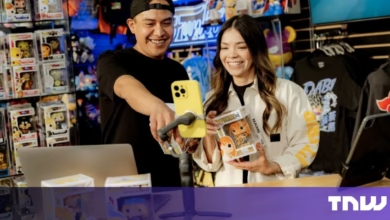YouTube’s Next Big Move: The Shopping Channel Revolution

▼ Summary
– YouTube is introducing monetization changes to shape its next 20 years of streaming.
– These changes will impact the videos viewers watch as creators adapt their businesses.
– Viewers may gain new methods for discovering products online through the platform.
– The ads linked by creators are expected to change as a result of these updates.
– The adjustments aim to influence both content creation and advertising strategies on YouTube.
YouTube’s recent unveiling of its long-term vision for the platform signals a major shift in how content creators and viewers will interact with video content. The streaming giant is rolling out significant monetization changes designed to reshape the creator economy and viewer experience alike. These updates promise to introduce fresh avenues for product discovery while altering the advertising landscape that supports creator content.
Creators are now positioned to integrate shopping features more seamlessly into their videos, transforming passive viewing into active purchasing opportunities. This evolution means audiences may soon encounter shoppable ads, product showcases, and direct purchase options without ever leaving the YouTube environment. The platform is essentially building what many are calling a shopping channel revolution, where entertainment and commerce merge into a single experience.
For viewers, these changes translate to more interactive content and streamlined access to products featured in videos. Imagine watching a makeup tutorial and being able to purchase the exact products used with a single click, or seeing a tech review that lets you compare prices and specifications from multiple retailers. YouTube’s approach aims to keep users engaged within its ecosystem while providing tangible value through convenience and immediacy.
The advertising model is also undergoing transformation, with creators gaining more control over how they monetize their content. Instead of relying solely on traditional ad breaks, they can now incorporate affiliate links, sponsored product placements, and integrated shopping features directly into their videos. This diversification empowers creators to build sustainable businesses while offering brands more authentic ways to connect with potential customers.
These developments represent YouTube’s strategic response to the growing demand for social commerce. By blending entertainment with shopping functionality, the platform creates a win-win scenario: creators earn more revenue, brands reach engaged audiences, and viewers enjoy a more interactive and useful viewing experience. The lines between content and commerce continue to blur, and YouTube is positioning itself at the forefront of this convergence.
As these features roll out globally, we can expect to see creators experimenting with new formats and content styles optimized for shopping integration. Unboxing videos, product demonstrations, and tutorial content may evolve to include more direct calls-to-action and purchasing opportunities. The very nature of video content could shift toward more commercially-driven productions while maintaining entertainment value.
The implications for e-commerce are substantial. YouTube’s massive user base and sophisticated recommendation algorithms could drive significant traffic to products and brands featured in videos. This creates new opportunities for product discovery that feel organic rather than intrusive, as recommendations come from trusted creators rather than traditional advertising.
While these changes offer exciting possibilities, they also raise questions about content authenticity and the balance between entertainment and commercial messaging. Viewers may need to adjust to more overt shopping elements within videos, and creators will need to navigate transparency requirements when promoting products. The success of this shopping revolution will likely depend on how well YouTube and its creators maintain viewer trust while introducing these commercial features.
Ultimately, YouTube’s moves reflect broader trends in digital media where platforms seek to capture more value from the attention they generate. By integrating shopping directly into the viewing experience, YouTube not only creates new revenue streams but also strengthens its position as an indispensable platform for both creators and consumers. The next era of video content looks set to be more interactive, commercial, and seamlessly connected to the world of online shopping.
(Source: The Verge)


